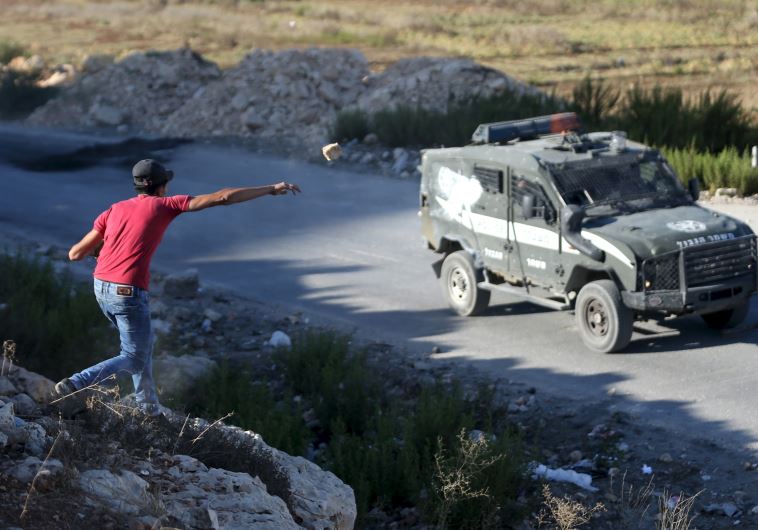Live fire against some stone-throwers among new police rules of engagement
Rules were put into place in the midst of the start of the current nine month long wave of violence and revealed under NGO pressure.
 A Palestinian throws a stone at a Border Police vehicle during a protest near RamallahUpdated:
A Palestinian throws a stone at a Border Police vehicle during a protest near RamallahUpdated: